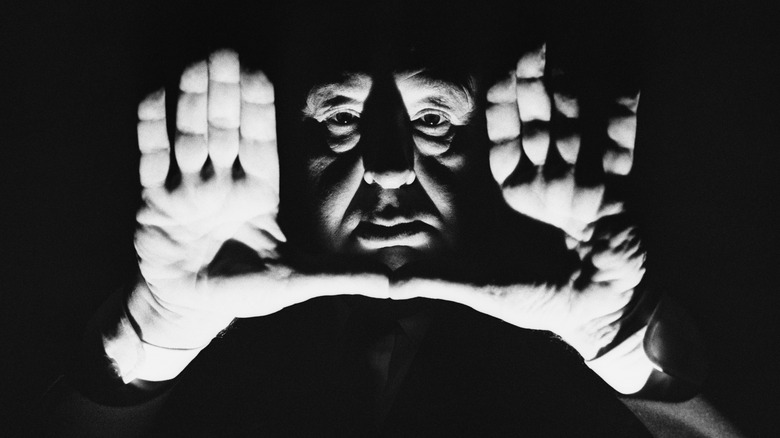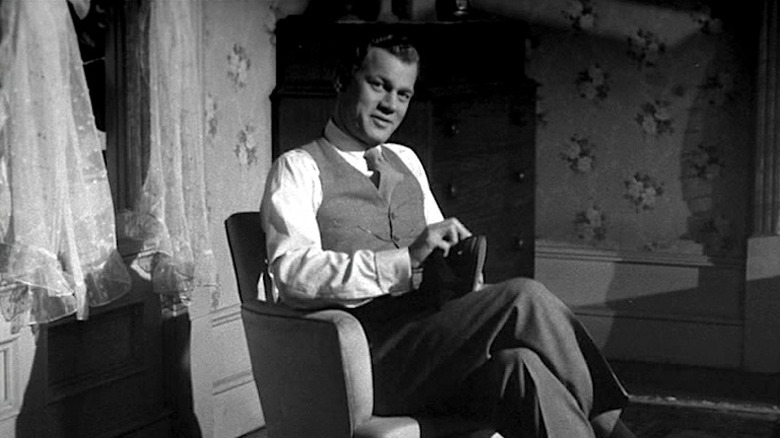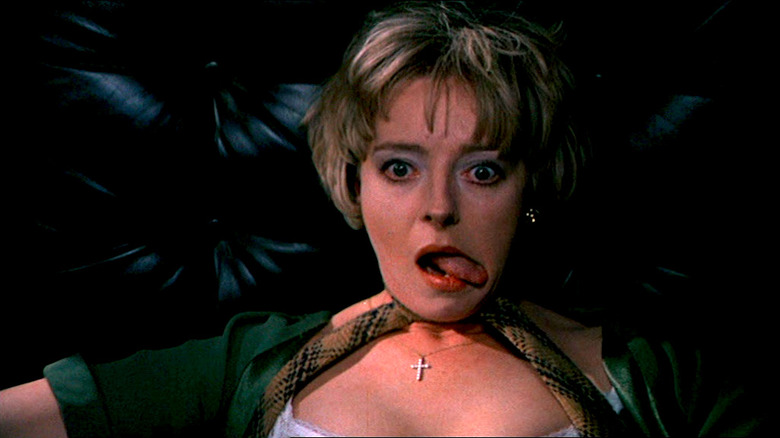The Reason Alfred Hitchcock's Kaleidoscope Was Never Released
It's no secret that Alfred Hitchcock is one of the greatest directors to ever live. Known for his voyeuristic camera style and his mastery of suspense, Hitchcock's filmography contains over 50 films that he directed throughout his career. He is probably most well-known for the revolutionary movie "Psycho" that tells the demented story of Norman Bates, a mother-obsessed killer responsible for one of the most iconic shower/bath scenes in movie history (sorry, Freddy Krueger). But many of his other films like "Rear Window," "Vertigo," and "The Birds" have solidified themselves as cinematic masterpieces, as well.
During his career, Hitchcock also hosted the popular show, "Alfred Hitchcock Presents" where he introduced (and occasionally directed) various short stories that enchanted their viewers. He was, without a doubt, a prolific man — you don't direct over 50 films within the span of five decades without an exceptional work ethic and dedication to the craft — but though many of his ideas were made into movies, there are still films in his oeuvre that never saw themselves fully realized on the silver screen.
Perhaps one of Hitchcock's most intriguing unmade films is "Kaleidoscope," a supposedly graphic depiction of the story of a serial killer that made many people (i.e. producers and executives) uncomfortable. Because "Kaleidoscope" would have arrived on the scene years before the socially aware horror films of the '70s, its existence would have meant a film with the potential to upend mainstream horror at the time. It's important to note that independent filmmakers in the '60s were already beginning to push the boundaries of horror with more explicit movies. Films like "Blood Feast" and "Two Thousand Maniacs" were already shocking audiences with their dedication to gore, but Hitchcock was hoping to bring some of that shock to Hollywood, too. Too bad "Kaleidoscope" as he envisioned it would never get its chance to surprise.
The Inspiration and the Plot
Taking a page from "Psycho," Hitchcock wanted to create a film that was even more intense than some of the more scandalous-for-the-time-period moments in his 1960 classic. In an article for the BBC, Hitchcock's impulse to make "Kaleidoscope" as provocative as possible was born out of his "determin[ation] to catch up with Europe's most innovative directors[.] Hitchcock wanted to apply their radical methods to one of his own typically dark narratives." He also wanted to prove to the studio and his audience that he was still able to make successful, suspenseful films, especially since two of his films following "Psycho" hadn't been very well received by critics.
According to the biography, "Alfred Hitchcock: A Life in Darkness and Light" by Patrick McGilligan and quoted in the BBC article, Hitchcock had apparently also recently seen Michelangelo Antonioni's film "Blow Up" — a story about a photographer convinced he's accidentally taken photos of a real life murder — and was extremely impressed by Antonioni's directorial prowess. During the '60s, the Italians were busy creating and defining the delightfully pulpy genre of murder/horror films known as "giallos," and "Blow Up" is often considered seminal in helping to define this genre's specific look. Ironically, giallo filmmakers were heavily influenced by Hitchcock himself, yet it's possible that Hitchcock found those same filmmakers inspiring as well, causing him to want to add some of their shocking flare to his own movies.
The story of "Kaleidoscope" is about a serial killer. Hitchcock based this main character Willie Cooper on the real life serial killer Neville Heath. In the film, Cooper is a murderer driven to his crimes whenever he finds himself around water (which ... yeah ... that's definitely strange). His sexuality is also supposed to be hinted at throughout the film by his large collection of body building magazines, and, like Norman in "Psycho," he exhibits an unnatural closeness to his mother. The script was apparently filled with gratuitous nudity and sex, much of which made many people, including Hitchcock's filmmaker friend François Truffaut, uncomfortable. But Hitchcock was determined to push boundaries and make the film anyway.
Alas, We Will Never Get a View Through Hitchcock's Kaleidoscope
Unfortunately for Hitchcock, the movie never got the green light from MCA/Universal. Try as he might — and he really did try — the studio simply saw the movie as too much of a risk. "Psycho" had offended many people's sensibilities only a few years prior (did we or did we not see more of Marion than we should have in that shower?), and the idea of a film told from the perspective of the killer themselves was deemed a bit too much for audiences to handle, despite the fact that, according to the BBC, "Hitchcock felt that he could be more explicit in the permissive '60s."
It's a shame that "Kaleidoscope" never got made. The film was set to act like a prequel of sorts to Hitchcock's 1943 film "Shadow of a Doubt" which tells the story of a man who is a prime suspect in a series of murders. But even though "Kaleidoscope" never made it to the big screen, parts of the story can be seen in Hitchcock's 1967 film "Frenzy," albeit just more toned down. It turns out that Hollywood felt Hitchcock's audience was just not quite ready for the explicitness that would soon make its way into popular horror films everywhere. While Hitchcock has undoubtedly made a huge impact on the future of cinema, I like to wonder what might have happened if "Kaleidoscope" was actually realized on the big screen. Perhaps the horror genre would look slightly different. And man, if Hitchcock were alive and making films today, you can bet every single one of them would be absolutely killer.


